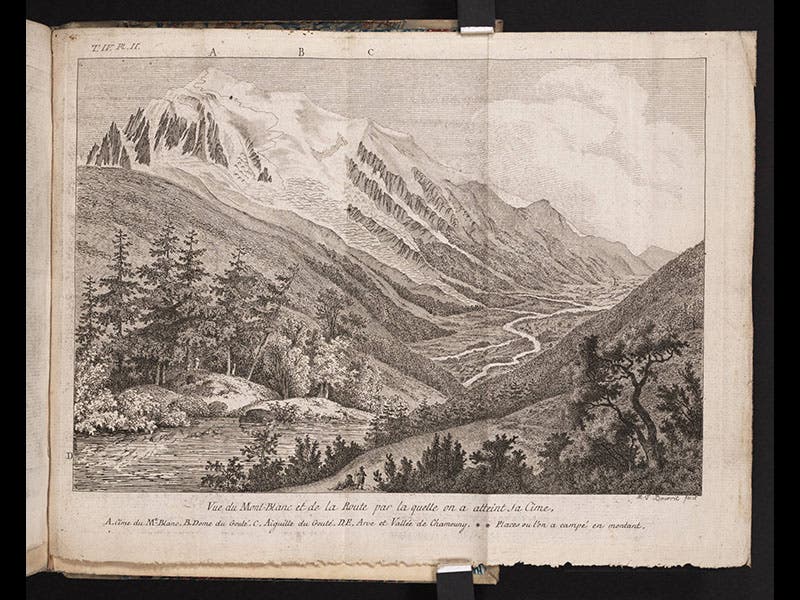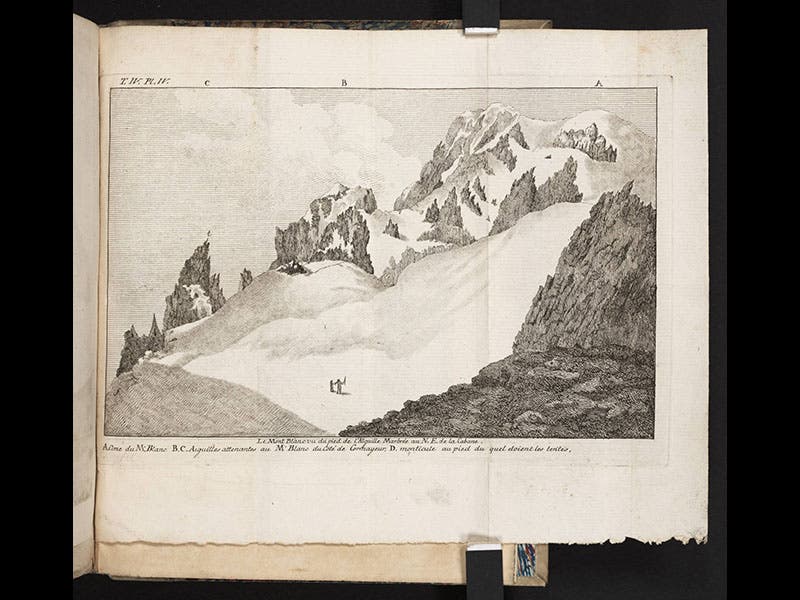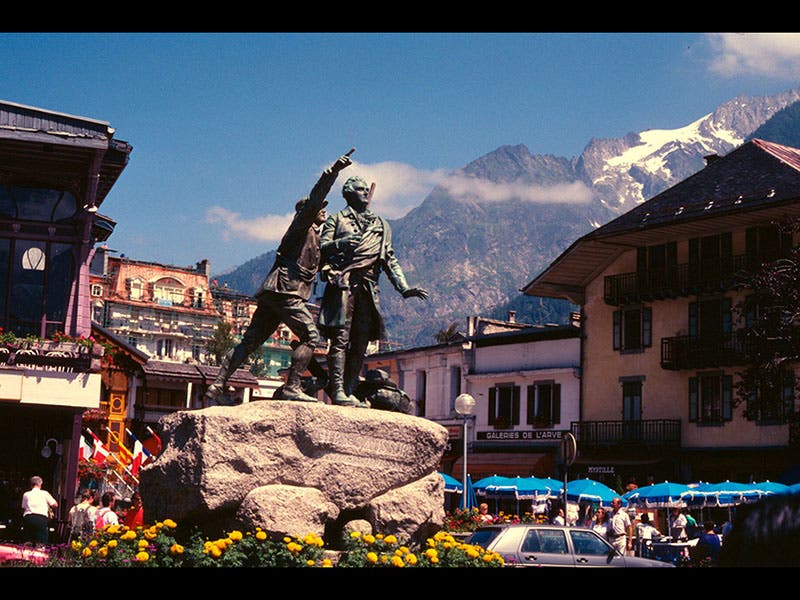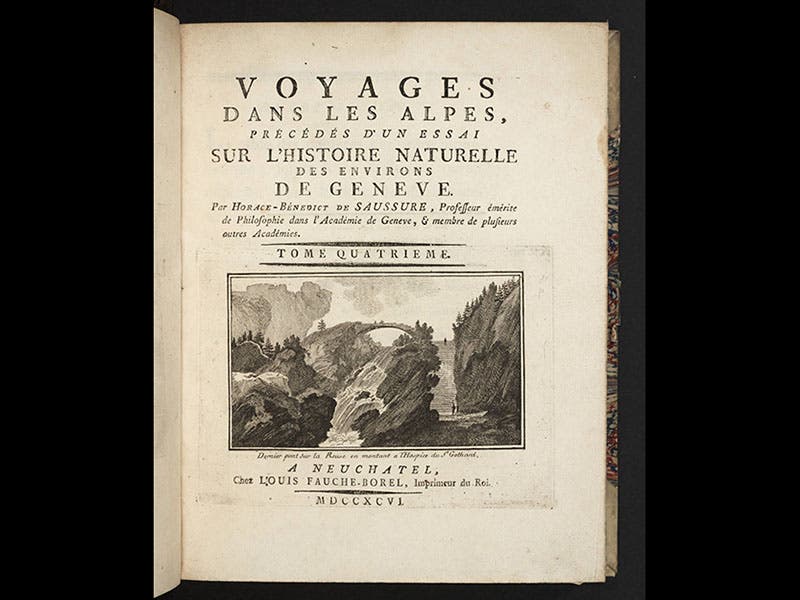Scientist of the Day - Horace Bénédict de Saussure
Horace Bénédict de Saussure, a Swiss savant, was born Feb. 17, 1740. On Aug. 1, 1787, Saussure set off from Chamonix with a guide, Jacques Balmat, and a small party of porters to scale Mont Blanc, at 15,780 feet, the highest mountain in the Alps. This was not the first ascent of Mont Blanc; it had been conquered the year before by Balmat, climbing with a physician from Chamonix, and then by Balmat again just the previous month, with two other locals. But this was the first climb by a savant--someone who supposedly would know how to take the scientific measure of the mountain. Most of his bearers were not carrying food or climbing equipment, but rather scientific apparatus, designed specifically for the occasion.
Once Saussure's party reached the summit, on the morning of Aug. 3, tables were set up and the measuring instruments were spread out, and Saussure went to work. He measured the atmospheric pressure with two 3-ft glass barometers filled with mercury that had been carefully packed for the journey. He measured the humidity with special hygrometers, and found it was much less than at lower altitudes, which is why they were so thirsty. He measured the static electricity in the air, and the boiling point of water, and the declination of a compass. He even carried an instrument called a eudiometer, which measured the "goodness" of the air (essentially, its flammability, or oxygen content), and another, which he invented, called a cyanometer, which measured the "blueness" of the sky at altitude. It consisted of sixteen pieces of paper, each tinted a different shade of blue, which he compared against the sky (the Mont Blanc sky was so blue it was almost off the scale of his cyanometer). After a full day of measurements, they packed up and set off down the mountain, reaching Chamonix to great acclaim on Aug. 5.
Saussure had already published two volumes of his Voyages dans les Alpes (1779-1796) before he climbed Mont Blanc, but in the two volumes that came later he included material about the adventure, including several views of Mont Blanc that show the path of the ascent (see first three images above). We have the four-volume set in our Collections.
There is a statue in Chamonix, now a prominent winter sports town, that shows Balmat pointing the way up the mountain to Saussure (fourth image). The last image shows the title page of volume 4 of the Voyages, which contains the account of the ascent.
Dr. William B. Ashworth, Jr., Consultant for the History of Science, Linda Hall Library and Associate Professor, Department of History, University of Missouri-Kansas City. Comments or corrections are welcome; please direct to ashworthw@umkc.edu.











